Nationality Indian | Name T. Santhosh | |
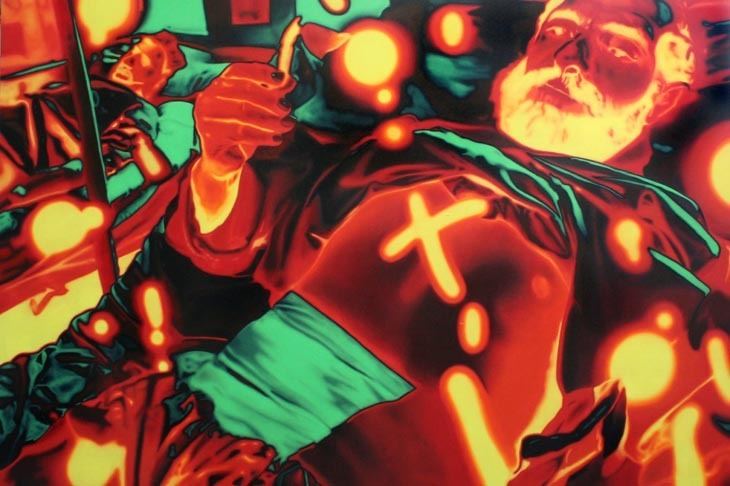 | ||
Education Maharaja Sayajirao University of Baroda Books Blood and Spit: Living with a Wound ; A Room to Pray ; Countdown | ||
T.V. Santhosh (born 1968 in Kerala) is an artist based in Mumbai.
Contents
- Early life and education
- Museum shows
- Solo exhibitions
- Key works
- Scholarships and awards
- Art market
- Collection
- References
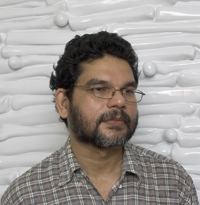
T. V. Santhosh obtained his graduate degree in painting from Santiniketan and master's degree in Sculpture from M.S. University, Baroda. T.V.Santhosh has acquired a major presence in the Indian and International art scene over the last decade with several successful shows with international galleries and museums. His earlier works tackle global issues of war and terrorism and its representation and manipulation by politics and the media. Santhosh’s sculptural installation "Houndingdown" was exhibited in Frank Cohen collection ‘Passage to India’. Some of his prominent museum shows are ‘Aftershock’ at Sainsbury Centre, Contemporary Art Norwich, England in 2007 and ’Continuity and Transformatuseum show promoted by Provincia di Milano, Italy.
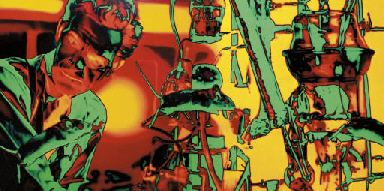
He lives and works in Mumbai.

Early life and education
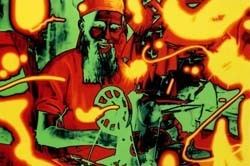
He was born in 1968 at Trichur in Kerala, India. He started studying painting from 1989, starting at the Institute of Fine Arts in Trichur. Later at (1994 B.F.A in Sculpture) Kalabhavan, Santiniketan, West Bengal. He had completed his M.F.A(1997) in Sculpture at Faculty of Fine Arts, Maharaja Sayajirao University of Baroda.
Museum shows
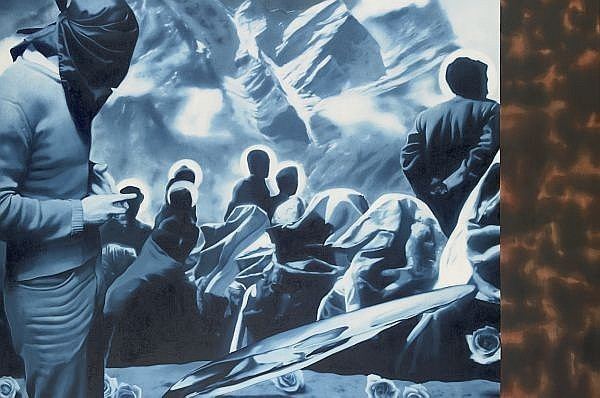
His major shows include the following:

Solo exhibitions
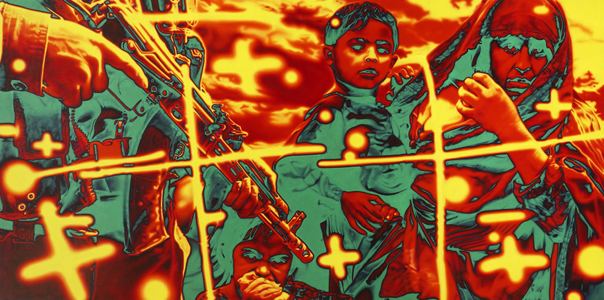
Key works
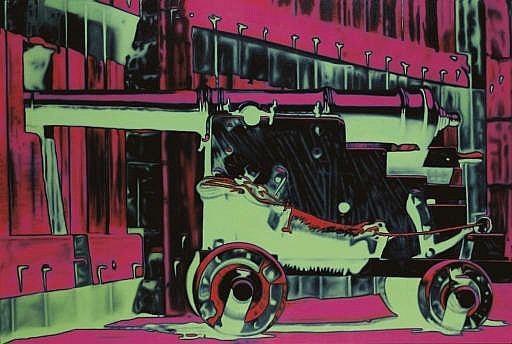
"The work titled, Houndingdown is a key installation that broadly reflects my conceptual and linguistic concerns of my recent engagements.It consists of thirty dogs and LED panels, is a combination of few historical references of ruthless and unforgivable deeds men committed in the past and relentless angst about the thoughts of future. One of the references is a testimony, a text that runs across on three LED panels placed on the floor, of a schoolgirl who witnessed the Hiroshima nuclear explosion. This re-edited first hand description of such a dreadful vision of terror and screams is almost like a hounding dream yet more real than real that sends a chill down through the spine. It is a story of burned and mutilated dead bodies, how a familiar neighborhood suddenly turns into a ruined war zone and how the radiation turns a young girl into looking like old aged. The redness of the LED text plays the role of the image by reflecting it on to the images of dogs thus playing a crucial role in building up the totality of the installation." T. V. Santhosh.
Living with a Wound, 2009“The wounds …At that time I did not understand what was happening with all of us. But then the future was dark and memories pained us more, nothing seemed to be making any sense except we knew that there was no way out. From time to time some civilians, maybe drug manufacturers, came to visit me. Without any reason, they made a cut in my arm above the palm 10 centimetres long and 2 centimetres wide. Today I understand that the surgery that was done on me without anaesthesia and was done purposely with tools that weren’t sterilised to cause infection. At times they kept exchanging the bandages with different medicated creams and liquids. The bandage was not wrapped around the arm but only covered the wound. Every day they examined the cut and each time the cut was about to heal, they reopened it and started the whole thing from the beginning. Alternate days a civilian would come to check the charts, made some remarks and gave orders. A part of the experiment was also to observe my ability to work with the wound and how far I could bear its pain. Slowly, as hopelessness started encroaching the pain, one day, Oh God! I heard someone screaming that war is over! And saw the soldiers there to rescue us from this hell…" text on the LED Panel of the sculpture, Living with a Wound, 2009
Living with a Wound II"The text in this sculpture was taken from a testimony of a holocaust victim who was part of the Nazi medical experiments. They were treating humans like mere guinea pigs. My reference here is to an experiment they conducted to see how long a man can continue to live, enduring the pain of a wound on his body. The Nazis would make a cut on the hand with un- sterilised tools, then cover it for some days and then open it up again and again on a regular basis each times just before it is about to heal so as to keep it a living wound." – T. V. Santhosh.
Effigies of Turbulent Yesterdays,2011–2013“The genre of the landscape can be understood, among other things, as a product of the encounter between the pastoral imagination and the aspirations of an emergent landed gentry, whose relationship to their property is often the ostensible subject matter of the paintings. Apart from whatever aesthetic qualities that these works might have, they allude to a history of dispossession of jointly held resources, – largely through the private enclosure of open fields that had been farmed collectively by the peasantry over centuries, – a history that remains invisible in the paintings themselves. In a similar way, the equestrian portrait can be seen as a figuration of power. It’s relative rarity is perhaps the result of generic conventions that tied it to an essentially commemorative purpose, but coupled with the fact that in the history of portraiture it is the powerful who have until recently had the privilege of being represented, one can see that it functioned almost exclusively in the service of ruling elite in establishing and extending their authority over their subjects. In painting, the equestrian figure is also implicated in conquest, as he traverses a landscape that he metaphorically colonises or administers and which became (or was) his fiefdom, acquired and maintained more often than not through the exercise of illegitimate power.
These iconographic conventions are here stood on their head (or lack thereof). In ‘Effigies of Turbulent Yesterdays’ we have a clash of different linguistic registers, with the powerful mimetic realism of the equestrian portrait meeting head on the schematised fountain of blood that springs from it, whose sources one can trace to miniature painting as well as comic book illustration. If the King is the Head of the State, then a decapitated monument is both a ludicrous and pitiful spectacle, – an act of iconoclasm which, like all forms of subversion attempts not to destroy it, but to turn it into an inverted representation of itself, or in this case, into an anti-monument that lays bare the disavowed histories of violence that sustain it, and by extension all such iconographies of power. The King famously has two bodies, a physical one that will eventually be subject to infirmity and death, and a symbolic one which metonymically stands in for the body politic and which continues to extend its dominion, by coercion or consent through the accoutrements of power. This act of symbolic regicide thus exemplifies the truth of every iconoclastic gesture, – the recognition that every contestation of power starts with the destruction of the images through which its authority continues to be exercised and reproduced, – and thereby indicates the limits of sovereign power.- Sathyanand Mohan.
Scholarships and awards
Art market
Many of his works have featured in Christie's and Sotheby's over the past decade. T. V. Santhosh is represenated by The Guild.
Collection
Major European and Indian Collections.
